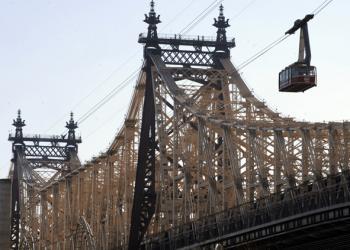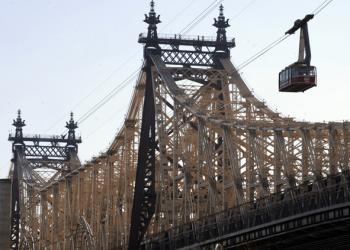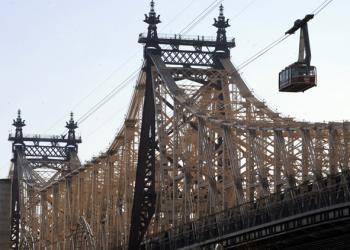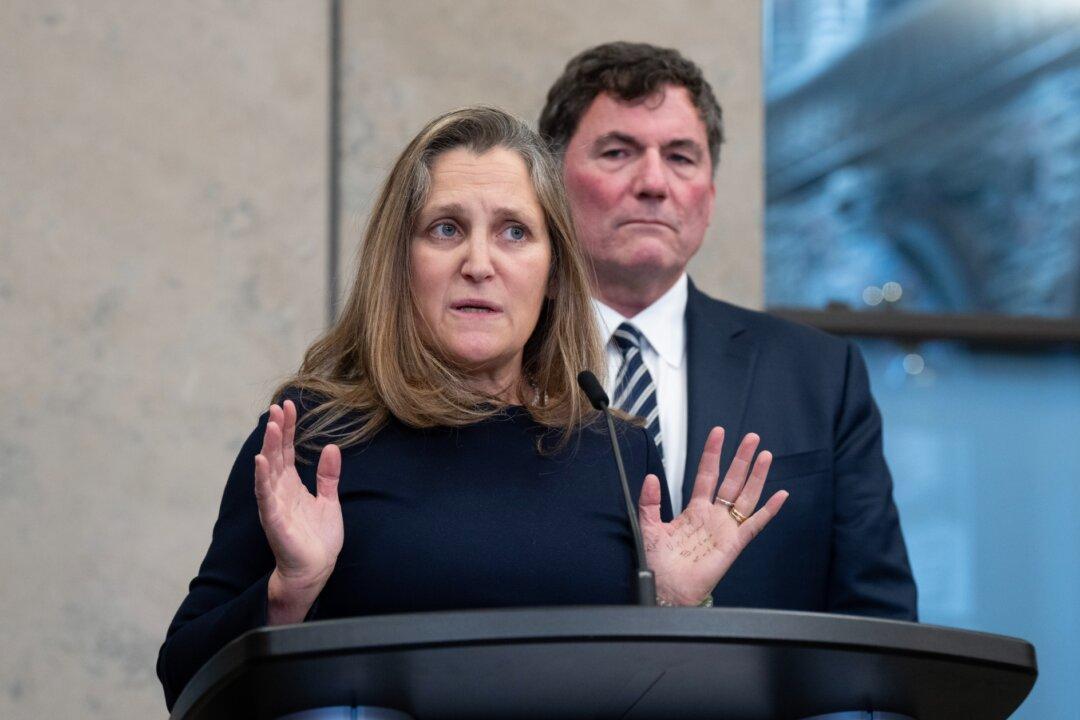NEW YORK—As debate stirs around renaming the Queensboro Bridge after former Mayor Edward I. Koch, the broader question of how New York memorializes anyone or anything comes to the fore.
Mayor Michael Bloomberg announced the renaming, which has yet to be approved by City Council, on Dec. 8, 2010. He said it was a fitting monument because Koch invested a lot in the city’s crumbling infrastructure, bridges included, during his time as mayor. Council Speaker Christine Quinn said the city should rename the bridge because Koch is “groovy.”
“Over 40 years ago, the Queensboro Bridge had Simon and Garfunkel feelin’ groovy and today there is no one in our city groovier than Ed Koch,” said Quinn in a statement. Councilman Peter Vallone did not contest the former mayor’s grooviness, but he did decry the ease with which the city would change a name he feels already has historical significance.
“Renaming a landmark so closely linked to our borough’s culture and history is not appropriate. The city would not rename the Brooklyn Bridge and the Queensboro Bridge should be treated equally,” declared Vallone in a statement on Tuesday. A City Council hearing that would have determined the matter Wednesday was postponed.
With Speaker Quinn’s support of the legislation, traffic announcers may soon be calling the Queensboro Bridge the Ed Koch Bridge—but they might be the only ones.
The Robert F. Kennedy Bridge is still the Triborough to many, and the Joe DiMaggio Highway is still called the West Side Highway.
“There’s traffic on the RFK [Robert F. Kennedy] Bridge—who the heck knows what that is?” asked Kenneth Jackson, professor of social sciences at Columbia University and editor of the Encyclopedia of New York City.
Jackson believes the city’s monuments need some revamping. While Koch looks at a massive, 7,449-foot structure traveled by 175,000 daily commuters, the man who consolidated New York City is memorialized by a humble bench in Central Park.
Andrew Haswell-Green envisaged the unification of the five boroughs into one great city in 1868. He worked with dedication for 30 years toward that end. At the ripe age of 78, he finally saw it realized on Jan. 1, 1898 under legislation he drafted. Jackson’s desire to see a grander Haswell-Green tribute will be realized in 2012; a park by the East River between East 60th and 63rd streets will bear his name.
“Ed Koch was a pretty serious New Yorker,” says Jackson, but he points out that Alexander Hamilton was quite a fellow too. Hamilton, who founded the New York Bank and represented New York in the first Congress among other actions with lasting impact on the city, stands in bronze—barely larger than he stood in life—on Convent Avenue between 141st and 142nd streets.
Hamilton does have two monuments to Koch’s potential one, with a granite likeness near the Metropolitan Museum of Art.
Hamilton may have another advantage over Koch, even if the memorial of the former is dwarfed by the latter. Bronze and granite are more permanent than a name.
Mayor Michael Bloomberg announced the renaming, which has yet to be approved by City Council, on Dec. 8, 2010. He said it was a fitting monument because Koch invested a lot in the city’s crumbling infrastructure, bridges included, during his time as mayor. Council Speaker Christine Quinn said the city should rename the bridge because Koch is “groovy.”
“Over 40 years ago, the Queensboro Bridge had Simon and Garfunkel feelin’ groovy and today there is no one in our city groovier than Ed Koch,” said Quinn in a statement. Councilman Peter Vallone did not contest the former mayor’s grooviness, but he did decry the ease with which the city would change a name he feels already has historical significance.
“Renaming a landmark so closely linked to our borough’s culture and history is not appropriate. The city would not rename the Brooklyn Bridge and the Queensboro Bridge should be treated equally,” declared Vallone in a statement on Tuesday. A City Council hearing that would have determined the matter Wednesday was postponed.
With Speaker Quinn’s support of the legislation, traffic announcers may soon be calling the Queensboro Bridge the Ed Koch Bridge—but they might be the only ones.
The Robert F. Kennedy Bridge is still the Triborough to many, and the Joe DiMaggio Highway is still called the West Side Highway.
“There’s traffic on the RFK [Robert F. Kennedy] Bridge—who the heck knows what that is?” asked Kenneth Jackson, professor of social sciences at Columbia University and editor of the Encyclopedia of New York City.
Jackson believes the city’s monuments need some revamping. While Koch looks at a massive, 7,449-foot structure traveled by 175,000 daily commuters, the man who consolidated New York City is memorialized by a humble bench in Central Park.
Andrew Haswell-Green envisaged the unification of the five boroughs into one great city in 1868. He worked with dedication for 30 years toward that end. At the ripe age of 78, he finally saw it realized on Jan. 1, 1898 under legislation he drafted. Jackson’s desire to see a grander Haswell-Green tribute will be realized in 2012; a park by the East River between East 60th and 63rd streets will bear his name.
“Ed Koch was a pretty serious New Yorker,” says Jackson, but he points out that Alexander Hamilton was quite a fellow too. Hamilton, who founded the New York Bank and represented New York in the first Congress among other actions with lasting impact on the city, stands in bronze—barely larger than he stood in life—on Convent Avenue between 141st and 142nd streets.
Hamilton does have two monuments to Koch’s potential one, with a granite likeness near the Metropolitan Museum of Art.
Hamilton may have another advantage over Koch, even if the memorial of the former is dwarfed by the latter. Bronze and granite are more permanent than a name.







